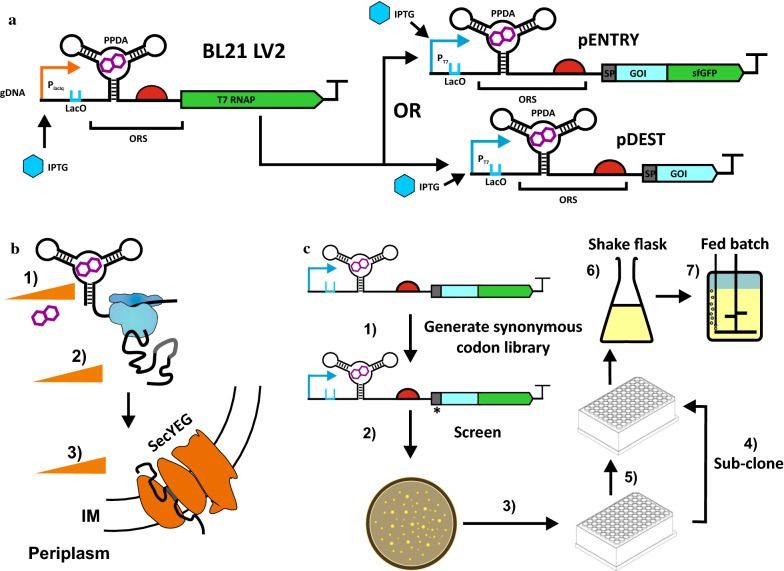Fig. 1.
Concept and workflow of applying the RiboTite expression system for titratable secretion. a The RiboTite system operates at both the transcription and translation level, to afford a gene regulatory cascade controlling both T7 RNAP and the gene of interest (GOI). Transcriptional control is mediated by the lacI repressor protein, induced by Isopropyl β-D-1-thiogalactopyranoside (IPTG). Translational control is mediated by an orthogonal riboswitch (ORS) which releases and sequesters the ribsome binding site (RBS) in the presence and absence of the inducer Pyrimido-pyrimidine‐2,4‐diamine (PPDA) respectively. The system is composed on an E. coli expression strain BL21(LV2) strain, and expression plasmids containing the T7 promoter. Shown are the pENTRY and pDEST expression plasmids used that incorporate the signal peptide sequence (SP) to direct the produced protein for periplasmic translocation, and GOI and GOI-sfGFP fusions also under orthogonal riboswitch (ORS) and T7 promoter control. For further description of the BL21(LV2) cassette see Additional file 1: Fig. S1. b Riboswitch-dependent translation control of the RiboTite system is employed to match expression rate to the secretion capacity of the Sec pathway. c Schematic diagram of workflow. The pENTRY vectors were used to integrate the 5′UTR riboswitch with the 5′ encoded SP sequences. (1) A synonymous codon signal peptide library was generated, and (2–3) screened to select for clones that exhibit high protein expression and high regulatory control over basal induction. (4) Selected clones were sub-cloned into the pDEST vectors, and (5) screened for expression and secretion at small scale in shaker flasks (6) and in fed-batch bioreactors (7)

